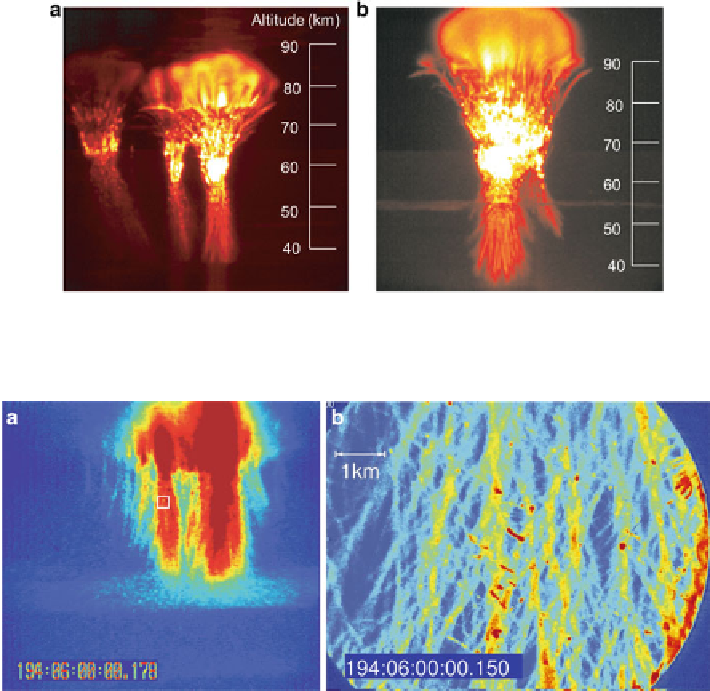Geoscience Reference
In-Depth Information
Fig. 3.12
The images illustrating the spatial sprite structure and transition between diffuse and
streamer regions in the sprites as observed (
a
) 04:36:09.230 UT and (
b
) 05:24:22.804 UT on
August 18, 1999. Taken from Stenbaek-Nielsen et al. (2000)
Fig. 3.13
Sprite telescopic images at low (
a
) and high (
b
) resolutions. The small area highlighted
on the panel (
a
) is shown on the panel (
b
) at large scale. Taken from Gerken et al. (2000)
Blue jets (BJs) are beams of luminosity propagating upwards in narrow cones
of about 15
ı
from the tops of thunderclouds (e.g., Wescott et al.
1995
; Boeck et al.
1995
; Mishin and Milikh
2008
). A color video imagery of the BJs has shown that
this kind of TLEs exhibit primarily blue color. On average they are several km in
diameter and typically brighter than sprites. BJs propagate with velocity of the order
of 100 km/s, that is slower than sprites. They climb in the stratosphere up to 40-
50 km altitude which implies a jet lifetime of 0.2-0.3 s. Blue starters are a kind of
BJs which differ from them by a lower terminal altitude. They can develop upward
from cloud tops at 17-18 km to terminal altitudes of about 25 km (Wescott et al.
1996
; Heavner et al.
2000
;Pasko
2006
). Gigantic jets (GJs) are more intensive
discharges with a much greater length than that of the BJs which results in the
formation of electrical connection between thundercloud tops and the conducting
E-layer of the ionosphere (Wescott et al.
2001
;Suetal.
2003
; van der Velde et al.

Search WWH ::

Custom Search